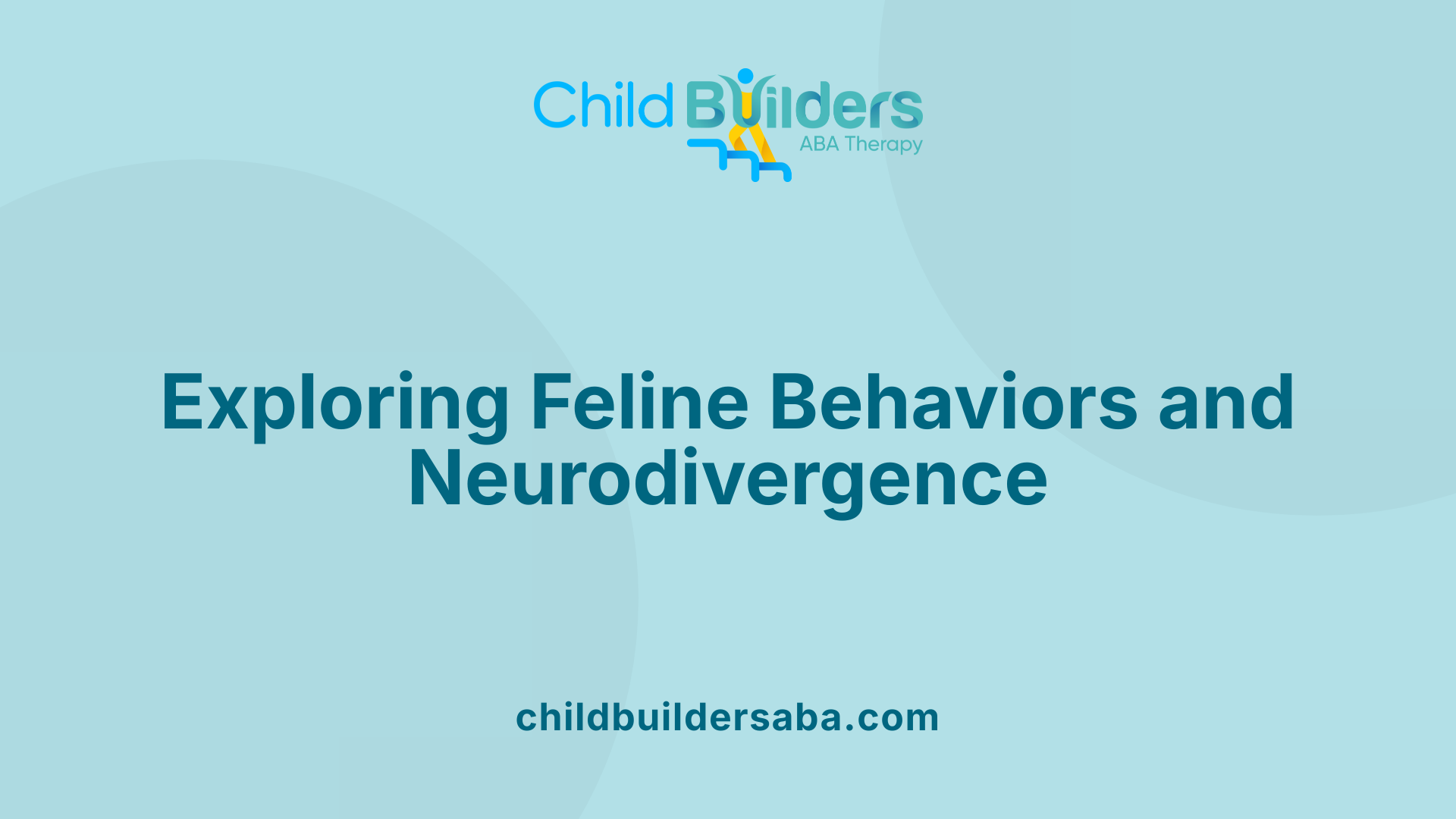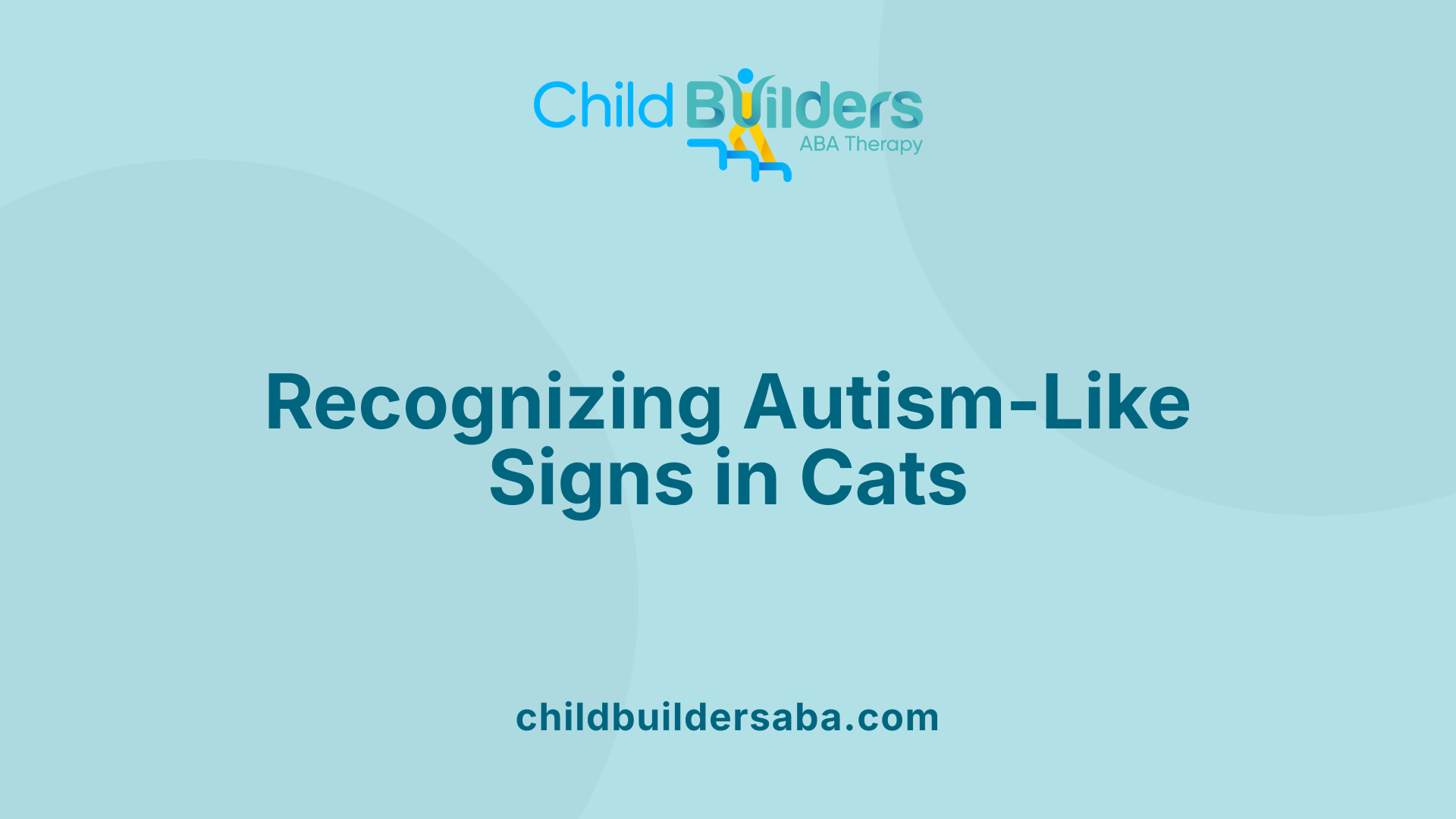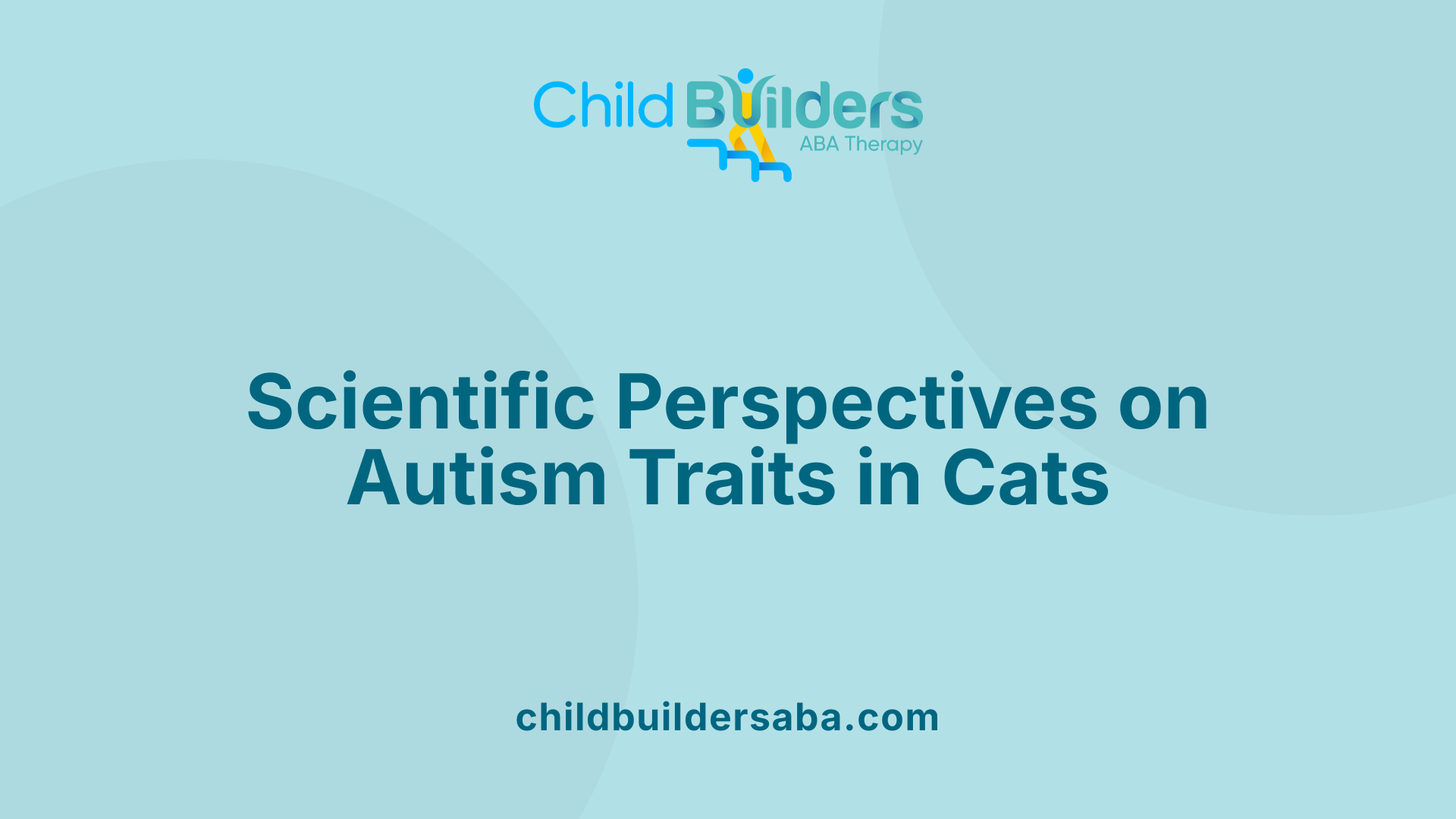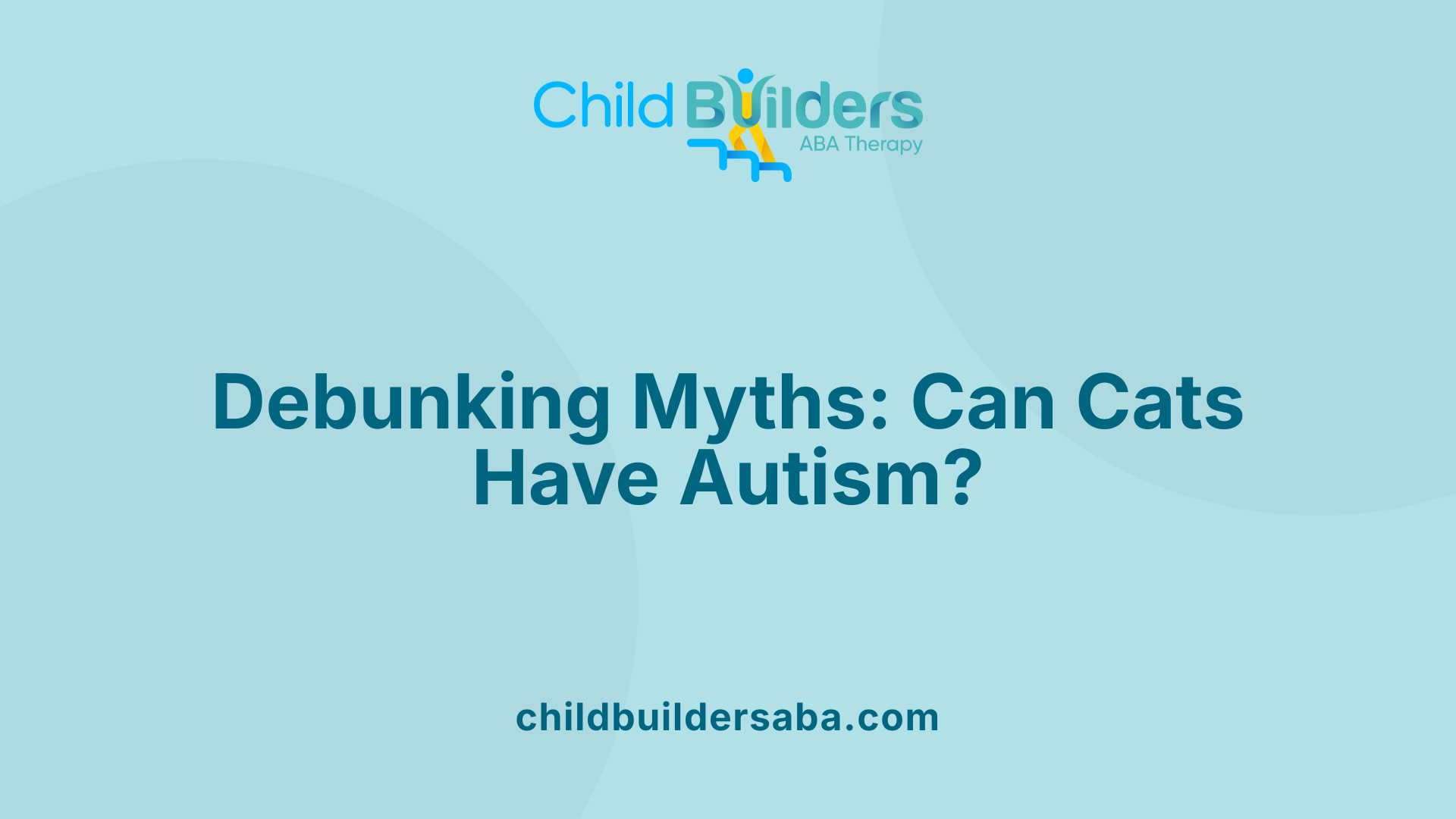Can Cats Have Autism?

Exploring the Intersection of Cats and Autism
The question of whether cats can have autism or display behaviors similar to neurodivergent traits in humans is both intriguing and complex. While cats cannot be diagnosed with autism, they often exhibit behaviors that resemble those seen in neurodiverse humans. Recent research, literature, and clinical observations shed light on these behaviors, enhancing our understanding of feline neurodevelopmental traits and their significance in pet ownership and animal welfare.
Understanding the Possibility of Autism-Like Behaviors in Cats

Can cats have autism or exhibit behaviors similar to neurodivergent traits in humans?
Cats cannot be diagnosed with autism, as autism is a condition specific to humans involving social, communication, emotional, and sensory processing differences. However, some cats can display behaviors that resemble traits seen in neurodivergent humans, such as hypersensitivity to stimuli, repetitive movements, or social withdrawal.
Research indicates that many cats living with children diagnosed with Autism Spectrum Disorder (ASD) tend to be affectionate and show little aggression. For example, studies note that 78% of cats in the first phase of research showed moderate affection toward children with ASD, and similar tendencies were observed in later phases. Despite these positive interactions, cats living with children with more severe ASD symptoms may display less attachment or exhibit certain stress-related behaviors.
Various feline behaviors—like heightened alertness, strong routines, and sensory sensitivities—can mirror mild traits of neurodivergence. These behaviors are often due to natural instincts as solitary hunters or environmental factors. For example, sudden changes in behavior could be linked to medical issues such as neurological disorders or sensory processing sensitivities, which should be checked by a veterinarian.
Although cats may exhibit behaviors that seem similar to neurodivergent traits, they are not indicative of a diagnosis of autism. Instead, such behaviors may be a response to stress, environment, or individual temperament. Recognizing these behaviors can help owners provide better care and create a more calming environment for both cats and their families.
In conclusion, while cats don't have autism, their behaviors can sometimes parallel human neurodivergent traits. Awareness of these behaviors allows caregivers to foster positive interactions and ensure the well-being of their feline companions.
The Significance of Educating About Feline Behavior
 Understanding feline behavior and neurodevelopmental traits is essential for fostering healthy, trusting relationships between cats and their owners. Cats exhibit behaviors that can resemble human neurodivergence, such as repetitive actions, strong attachment to routines, sensory sensitivities, and social interactions on their own terms. Recognizing these traits can help owners distinguish between normal feline behavior and signs of discomfort or health issues.
Understanding feline behavior and neurodevelopmental traits is essential for fostering healthy, trusting relationships between cats and their owners. Cats exhibit behaviors that can resemble human neurodivergence, such as repetitive actions, strong attachment to routines, sensory sensitivities, and social interactions on their own terms. Recognizing these traits can help owners distinguish between normal feline behavior and signs of discomfort or health issues.
Educational efforts, like specialized training programs, emphasize how behaviors such as resistance to change or specific interests might be tied to a cat’s sensory or neurological makeup. This awareness encourages owners to take proactive steps in managing behaviors that might otherwise lead to frustration or behavioral problems.
Proper understanding of feline traits directly impacts pet health. For instance, sudden behavioral changes could signal medical conditions like feline cognitive dysfunction or neurological issues, which require veterinary attention. Educating owners about these signs promotes timely intervention, ensuring cats receive appropriate care.
Furthermore, awareness of neurodivergent attributes in cats enhances how owners respond to behaviors that may initially seem challenging. For example, choosing socialized kittens or breeds known for affectionate tendencies, such as Ragdolls, can facilitate positive interactions.
Overall, education about feline neurodevelopment supports responsible pet ownership. It helps reduce misunderstandings, promotes humane behavior management, and improves the welfare of cats. As a result, both cats and owners enjoy a more harmonious and enriched relationship, reflecting a broader understanding of the diverse ways cats express themselves.
Identifying Behavioral Signs that Resemble Autism in Cats
 Many traits found in cats can sometimes mirror behaviors associated with autism spectrum disorder (ASD) in humans, offering intriguing points of connection between human neurodiversity and feline behavior.
Many traits found in cats can sometimes mirror behaviors associated with autism spectrum disorder (ASD) in humans, offering intriguing points of connection between human neurodiversity and feline behavior.
One observable sign is social withdrawal or avoidance of interaction. Cats that prefer solitude or avoid engaging with their human caregivers or other animals may be displaying behaviors that resemble social challenges seen in some people with ASD.
Repetitive behaviors are also common in cats, such as persistent grooming, pacing, or kneading objects repeatedly. These routines can serve as comfort mechanisms for the cat, similar to how repetitive behaviors in humans can assist with managing sensory or emotional stresses.
Sensory sensitivities are often noticeable, with some cats reacting strongly to loud noises, bright lights, or certain textures, while others may seem indifferent to stimuli that typically attract attention. This varied response indicates differences in sensory processing, comparable to sensory sensitivities in individuals on the spectrum.
Unusual behaviors like excessive vocalization, focused attention on specific objects, or self-isolation can be traits that resemble certain neurodivergent patterns. For example, a cat obsessively focusing on a single spot or sound may parallel obsessive interests seen in some people with autism.
However, it’s crucial to recognize that these behaviors in cats can also stem from medical issues, anxiety, or environmental factors. Sudden changes in behavior should prompt consultation with a veterinarian to rule out health problems such as neurological conditions or sensory deficits.
While cats cannot be diagnosed with autism, understanding these behavioral signs can foster compassion and optimal care, especially for families with children on the spectrum. Proper assessment ensures that observed behaviors are interpreted within the appropriate health and behavioral context.
Scientific Insights into Autism Traits in Cats

What scientific research exists about autism spectrum traits in cats?
Research specifically examining autism spectrum traits in cats is limited. Most existing studies focus on human autism, exploring symptoms and diagnostic criteria. However, some research has looked at the behaviors of cats that may resemble certain traits associated with neurodivergence.
A notable study published in the Journal of Pediatric Nursing investigated the effect of shelter cats on children with Autism Spectrum Disorder (ASD). The findings suggested that cats could help foster empathy and reduce challenging behaviors such as hyperactivity and aggression. Children with ASD reportedly formed strong, quick bonds with their cats, which often persisted over time.
Most cats involved in these studies displayed affectionate and social behaviors, with low levels of aggression. Breeds like the Ragdoll are highlighted for their instinctual gentle and friendly nature, which contributes to positive interactions with children. Although scientific evidence directly connecting cat behaviors to autism traits is scarce, observational data suggests that cats can influence emotional well-being and social skills positively.
Overall, current research points to a beneficial role for cats in supporting children with ASD, mainly through emotional calming and social bonding, despite the limited number of targeted studies specifically on autism spectrum traits in cats.
Clarifying the Misconception: Can Cats Have Autism?

Is it a misconception that cats can have autism?
Autism is a human neurodevelopmental condition characterized by differences in social interaction, communication, and sensory processing. It is diagnosed based on specific clinical criteria that involve complex behaviors and developmental history, making it impossible to diagnose autism in animals. Therefore, the idea that cats can have autism is a common misconception.
While cats cannot be diagnosed with autism, they do exhibit behaviors that might resemble some autistic traits, such as avoiding eye contact, repetitive movements, or a preference for solitude. These behaviors are usually normal responses to pain, stress, or health issues, or simply part of certain feline personalities.
Interestingly, many individuals on the autism spectrum form strong bonds with cats. These animals can provide comfort, companionship, and a calming presence that benefits emotional well-being and social interaction. Such positive relationships highlight the importance of understanding that behaviors similar to human autism are not exclusive to humans.
It’s essential for pet owners and caregivers to recognize that behaviors that seem unusual or obsessive may sometimes be related to medical conditions like feline cognitive dysfunction or sensory sensitivities. Consulting a veterinarian can ensure that any behavioral changes are health-related.
In summary, although cats can display behaviors that resemble certain aspects of autism, they cannot themselves have the condition. Appreciating these distinctions helps foster empathy and proper understanding of both human neurodiversity and feline behavior.
Exploring Neurodivergence and Its Broader Implications
How can exploring autism in cats help in understanding animal behavior and neurodivergence?
Studying behaviors in cats that resemble autism can significantly enhance our understanding of neurodiversity across species. For instance, some cats display repetitive actions, strong attachment to routines, and sensory sensitivities—traits that mirror human neurodivergent experiences.
This cross-species perspective allows researchers to identify how neurological differences manifest in different brains and environments. It can shed light on the genetic and neurological foundations of behaviors associated with neurodiverse individuals.
By examining feline behaviors, including social interactions and reactions to stimuli, scientists can better understand how animals with neurological variations develop and adapt. Such insights contribute to a more comprehensive picture of brain diversity, which benefits both veterinary medicine and human healthcare.
Furthermore, this approach encourages a recognition that neurodiverse behaviors are part of natural variation rather than abnormality. It promotes empathy for animals that exhibit these traits and reduces stigma associated with neurodivergence.
In line with the One Health philosophy—which emphasizes the interconnected health and well-being of humans, animals, and the environment—research into these behaviors fosters a deeper appreciation of the complexity of brain development and function across species.
Ultimately, investigating autism-like traits in cats not only enhances our understanding of animal behavior but also informs strategies for diagnosing and supporting neurodiverse humans. It paves the way toward more inclusive attitudes and innovative interventions, benefiting society as a whole.
Cross-species understanding of neurodevelopmental differences
Recognizing behaviors in animals that resemble human neurodevelopmental traits encourages a broader, more inclusive view of mental health. It emphasizes that neurodivergence is a natural part of biological diversity rather than a defect.
By fostering empathy for animals displaying such traits, we also promote acceptance and understanding among humans, encouraging a more compassionate approach to neurodiversity.
The potential benefits of studying feline behaviors
Studying cats with autism-like behaviors can lead to improved behavioral management and welfare practices. It can inspire future research into therapy animals, socialization strategies, and environmental modifications that support neurodiverse individuals.
Overall, this integrative perspective enhances our knowledge of brain function, development, and adaptation, illustrating the interconnectedness of life across species.
Embracing Diversity in Behavior and Nature
While cats cannot be diagnosed with autism, recognizing behaviors that resemble neurodivergent traits helps foster a more compassionate understanding of feline personalities and common challenges. Further scientific study, combined with increased awareness and education, can improve both animal welfare and human-animal interactions. Appreciating the diversity of behaviors in cats and humans alike underscores the importance of empathy and tailored care, promoting harmony and well-being across species.
References
- All Cats are on the Autism Spectrum (Updated Version) | Welcome
- Affectionate Interactions of Cats with Children Having Autism ...
- Can Cats Have Autism? A Curious Look at Quirky Cat Behavior
- Affectionate Interactions of Cats with Children Having Autism ...
- Affectionate Interactions of Cats with Children Having Autism ...
- Can Cats Have Autism? A Look at Feline Behavior & Neurodiversity
- All Cats Are on the Autism Spectrum | Jessica Kingsley Publishers
- New Research Shows Cats Help Children with Autism | Press Room
- Affectionate Interactions of Cats with Children Having Autism ...





.jpg)































































































